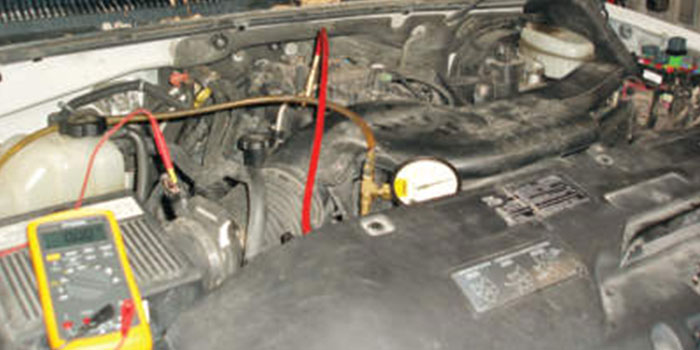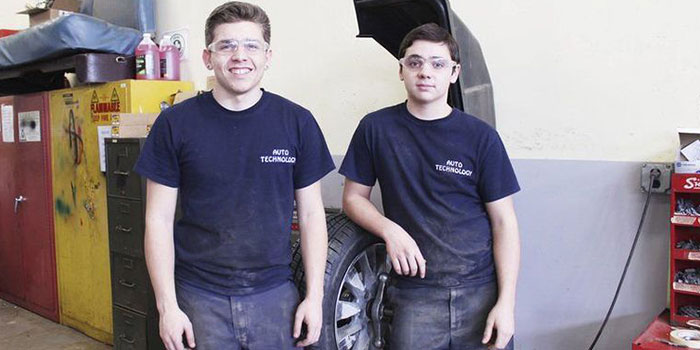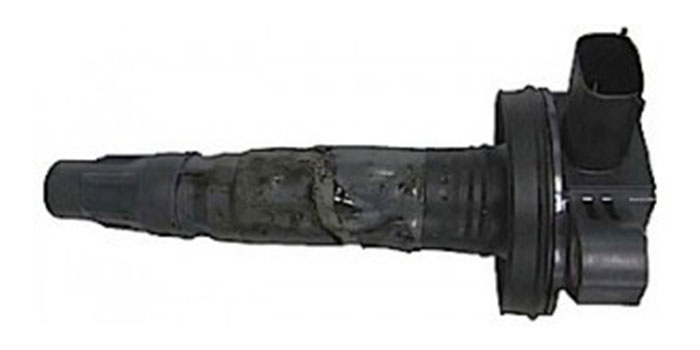When you hear the name Cummins, what is the first thing that comes to mind? Most of the time, if you have any knowledge of trucks, a Dodge truck is the first thing that comes to mind.
The Cummins diesel engine has always had a great reputation for reliable diesel power. Though the Cummins diesel engine can be found in many applications, it seems to obtain most of its credit from drivers of over the road trucks. In 1989, Dodge made a bold move to the automotive market by offering the Cummins diesel for its mid-size truck line. Now, almost 25 years later, the Dodge mid-size truck with a Cummins diesel still holds an awesome reputation for efficiency, reliability and dependability.
Changing Perceptions
Something you have to realize is that when this truck debuted in 1989, the diesel engine was really not sought after by consumers for the use in their mid-size truck. At this time, diesels were considered to be nothing but slow and loud clanking buckets of bolts. But, when Dodge offered a turbocharged Cummins, the public started taking notes. These engines were considerably quieter and offered great pulling power along with fuel mileage. Since the public already knew about the reputation of the Cummins diesel, it was really a no-brainer that the truck would prove to be a reliable workhorse that would actually sell itself to the masses.
B Series
The Cummins engine we are talking about is commonly referred to as the 6BT. The 6BT stands for six cylinders, “B” series engine and it’s Turbocharged. Many enthusiasts always wanted to know what the “B” stood for. The “B” series family was used by Cummins to identify those diesel engines that shared the same bore and stroke.
The “B” series engines could be four or six cylinders that both shared a 4.020” bore and a 4.72” stroke. This is very similar to other diesel engines that Cummins has produced such as the N14. This was an “N” series engine, which had a displacement size of 14 liters. There were other displacement sizes of the “N” series, but they all had the same size bore and stroke. They were just designed for different applications.
The “B” series engines are commonly referred to as the 4BT and the 6BT. These are four-cylinder and six-cylinder engines that produced 1 liter per cylinder. Both of these engines shared a lot of the same valvetrain components along with the same pistons and connecting rods.
Both of these engine designs were used many years in agriculture long before the 6BT engine was introduced in the Dodge truck in 1989. They were primarily used in Case tractors in the early 1980s. They can also be found in other applications such as air compressors, back hoes, boats, generators and buses. So, they were long proven in reliability before seeing production in a Dodge truck.
The 6BT, starting in 1989 and continuing through 1998, was commonly referred to as 12 valves. These can be easily identified by six individual valve covers on top of the cylinder head. From 1989 to 1991, the 6BT was introduced without an intercooler and a CAV-style rotary injection pump.
In 1991, an intercooler was added along with a Bosch-style rotary injection pump. This style of rotary injection pump was used until 1994, and then the engine was fitted with a Bosch P7100 injection pump. The reason for the injection pump change was to lower emissions. Diesel emissions regulations were first imposed by the government in 1994.
The P7100 pump was a piston-style pump that could be used for more precise fuel and timing control, which delivered more efficiency along with more power and produced less smoke.
Throughout production from 1989 to 1998, there are only a few problems that have occurred that are worth mentioning. One would be known as the “Killer Dowel Pin.” This is the dowel pin that is used in the front of the engine block to align the aluminum front engine cover. This aluminum front cover is basically the timing gear cover for the front of the engine.
Over a period of time, the pin has been known to back out of the engine block. When this happens, three things can occur. One, the dowel pin falls to the pan and no harm done. Two, the dowel pin will force against the aluminum front cover and cause the front cover to crack. Three, the dowel pin falls into the timing gear of the crankshaft causing major engine damage.
Crackdown
A common problem on the 1994-’98 models is cracking of the aluminum front cover. Since the internals of a diesel engine can cause a lot of torsional engine vibrations, sometimes the rest of the engine components cannot endure the stress the vibrations place on them. The aluminum front cover of these models is a two-piece design. There is an inner structure that bolts to the engine block that the outer aluminum cover bolts to.
The inner structure of the front cover on the driver’s side of the engine is used to support the power steering pump along with the injection pump. Even though these engine components have braces that are bolted to the engine block that help support their weight, they often crack the inner structure of the cover due to stress over time. This crack will often cause a severe unwanted oil leak at the front of the engine.
When the inner structure of the front cover finally cracks, the repair can be somewhat extensive and somewhat expensive. In order to repair the cracked support for the inner cover, the front of the engine will literally have to be removed along with the cylinder head. The reason for this is, when removing the outer front cover, you will find that the inner structure is completely surrounded by the engine’s gear train. This means that all the components such as the injection pump, power steering pump and camshaft have to be removed in order to remove the inner structure. This is the reason that the cylinder head will have to be removed.
Let me explain in a little more detail. In order to remove the injection pump, you must place the engine in “time.” The injection pump is timed by Cummins and there is no woodruff key in the pump shaft to align the gear. In order to remove the pump, you must first remove the valve cover for the #1 cylinder to expose the rocker arms. Below the injection pump, there is a small plastic dowel that has been placed in the front cover by Cummins to assist in timing the engine.
You must rotate the engine with a ratchet and socket placed on the damper of the engine while pressing in on the plastic alignment dowel on the front cover. When the engine is at top dead center on the #1 cylinder, the alignment dowel will push in to the gear of the camshaft. To verify that the timing is in the correct position, the rockers will be loose on the #1 cylinder.
However, there is another way to check to make sure that the injection pump is timed correctly. Toward the back of the injection pump, on the lower portion of the pump, there is a plug. If you remove the plug (there will be some oil that will come out when the plug is removed), you’ll notice that there is also a plastic line-up tool.
You have to take the small alignment tool out of the plug and turn it around and place the tool back in the plug. This small alignment tool will slide right into a small opening inside the injection pump if the timing is correct. If you cannot slide this tool into the slot, then the slot is not properly exposed and the injection pump must be rotated in order to bring this window into sight.
You can however, take a small mirror with a light and see up inside the injection pump to see if the timing window is in sight. The window for proper timing should line up evenly in the small opening in which the plug was removed. If the valves for the #1 cylinder are loose and the plastic alignment dowel will push in on the front cover along with the window in the injection pump being centered in the small opening for the plug, the engine should be in time. Then the gear for the injection pump can be removed. This will have to be done with a gear puller.
Once the gear has been removed, the injection pump, along with the high-pressure lines, can be removed. The rest of the valve covers, along with the rocker arms and push rods, can be removed as well. The reason for the removal of the cylinder head is to make things a little easier to work on. I have seen some prefer not to remove the cylinder head, but at this point, a lot of things are at stake.
The problem is the camshaft has to be removed. But you have to remember one thing: the lifters are a mushroom-style, meaning that they are installed from the bottom of the block during assembly with the engine upside down. You will remove the cylinder head, but you’ll need to use some 1/2” wooden dowel rods to support the lifters. Yes, wooden dowel rod.
You can purchase 1/2” wooden dowel rod at any hardware store generally in 3’ lengths. You’ll need to purchase enough dowel rod to make 12 10” wooden dowels. The wooden dowel rod will be soft enough to drive into the top of the lifter where the pushrod goes.
Once all 12 wooden dowels are driven into the tops of the lifters, each one can be supported to the other with a rubber band. Once installed, you can pull up gently and the lifter should rise. It may sound complicated, this instruction is provided in detail in the Cummins service manual.
Once the radiator and intercooler are removed, the camshaft can be removed from the engine block. There are retaining bolts behind the camshaft gear that hold the camshaft in the block that have to be removed first. Once the camshaft is removed, the inner structure of the front cover can be removed. This is a lot of work, but it’s the only way to replace the inner structure.
Like I mentioned earlier, there are some who prefer not to remove the cylinder head, but if the wooden dowel is not properly installed into the lifter in a tight fit situation, the lifter will fall into the oil pan. Then the engine will have to be removed from the vehicle in order to remove the oil pan to extract the lifter from the engine.
Avoid the Noid
One other problem on the 1994-’98 models was the fuel shut-off solenoid. When the P7100 injection pump was introduced, the fuel shut-off solenoid was mounted on top of the rear of the injection pump near the throttle control cable. The solenoid basically moved the external fuel shut-off lever. The older-style rotary pumps had a solenoid mounted externally, but internally the solenoid stopped fuel from flowing by releasing a rubber plunger when the solenoid was de-energized. On the P7100 injection pump, the solenoid basically moved an external lever, which would shut off the fuel to the pump. This basic style was great until the solenoid went bad.
Owners would crank their vehicle and when reaching their destination, would realize that they could not cut their engine off. They would have to go under the hood into the engine compartment and lower the fuel shut-off lever manually. Really no big deal until you had to purchase the solenoid. This was a terrible marketing design by Cummins because the fuel shut-off solenoid was $350. (For a little electric motor, Cummins wanted $350?)
So, when working on this year model of Cummins, it’s not uncommon to find a “choke” cable off of a lawnmower installed with a handle mounted somewhere below the steering wheel at the lower part of the steering column. This $25 apparatus worked well. All you have to do is cycle the ignition switch to the off position and pull the cable and the engine would shut down.
If you wanted to crank the vehicle, just simply push in on the cable and normally start the vehicle with the ignition switch. Now, after some 12 years, there are some aftermarket companies who are manufacturing an electric fuel shut-off solenoid for about half the price. Some owners had become pretty inventive by adapting some similar fuel shut-off solenoids from industrial and agricultural equipment.
Improving Emissions
In mid 1998, Cummins introduced another version of the 6BT. This would be known as the ISB. This stands for Interact System B. With growing demands from the government to lower emissions, Cummins released a 24-valve design engine with an electronic high-pressure injection pump and electronic injectors. The electronic injection pump is also known as the Bosch VP44. These engines produced a little more power and torque with more fuel efficiency and less smoke. The ISB engine with the VP44 injection pump was only produced until 2002, but gained more power each year.
One of the biggest problems these engines suffered from was the injection pump. The VP44 did not like fuel starvation. When first introduced, a small fuel pump was placed on the back of the fuel filter housing. It was discovered that this type of fuel pump would not last and would burn up. The purpose of the fuel pump was to draw fuel from the tank and pressurize it to supply the VP44. Over a period of time, the fuel pump would lock up and not function.
But, the crazy thing is, the fuel pump locking up would not cause the engine to immediately shut down. The injection pump itself was able to siphon fuel from the tank into the chamber of the pump. Drivers would continue to operate the vehicle noticing only a small stumble or cut-out sometimes. The whole time the VP44 was siphoning fuel from the tank, the pump itself was actually deteriorating from starvation. When the owner finally realized that there was a problem, it was too late.
The injection pump would have to be replaced along with an updated fuel system to remedy the problem. The updated fuel system was an upgrade for the fuel pump. This upgrade consisted of a pump-in-tank with all the necessary hardware and lines to remove the existing pump on the back of the filter housing and mount an electric relay from the fuse box under the hood to power the fuel pump.
Some aftermarket companies offer fuel pump upgrades for the VP44 fuel system. This consists of a frame-mounted high-pressure pump that constantly supplies fuel to the injection pump. Either update has decreased the failures of the VP44. But, keep in mind that this injection pump has an electronic module integrated in it, which is the pump’s “brain.”
This electronic module can also fail at any time. There are numerous running conditions that can occur with this style of pump when the module is going bad. This will happen even when there is ample supply of fuel to the pump. These injection pumps are expensive, so make sure to purchase one from a reputable supplier. Often owners may find one at a third of the price, but have not seen any reliability or dependability.
Another problem from the ISB was the block casting number 53. The casting number for the engine is on the side of the block. Number 53 was manufactured from 1999 to 2001 from a Brazilian-named company called TUPY. The problem with the 53 block was the thin water jackets that surrounded the cylinder walls. The water jacket would usually crack toward the rear of the block on the driver’s side, causing a small coolant leak. As time went by, the crack would grow by several inches in length, causing major coolant loss and overheating issues.
Many attempts have been made to repair the crack, but only some have succeeded. Most of the time, the engine is replaced with a different casting number from a salvaged vehicle. If you’re an owner of this year model and are concerned, look for a casting number. If there is no casting number on the side of the block, then it is likely that the block was manufactured in Mexico and there were no issues. Cummins corrected the situation by increasing the thickness of the water jackets and working with the Brazilian manufacturer by developing a stronger block. This block can be identified with a casting number 54.
In 2003, Cummins released the ISB-CR. As growing emissions demands were being placed on diesel manufacturers, Cummins came out with a complete electronic common-rail diesel engine. Common rail uses high-pressure diesel injection with electronic injectors to increase fuel atomization for better efficiency.
The common rail injection can use multiple injection events per cycle to increase maximum power along with a reduction in emissions. The Cummins common rail engine thus far has not had any major failures or problems. There are some situations where there has been an injector failure or maybe a high-pressure pump or some other electrical sensors, but no major mechanical problems thus far.
In 2007, to meet the needs of greater demands of emissions reduction and more power, Cummins released the ISB 6.7. This is a 6.7L engine that yields 408 cubic inches. Why this is considered a “B” series engine is unknown due to the fact that it does not have the same bore and stroke as the existing “B” series family. The bore of the 6.7 is 4.21” and the stroke is 4.88”.
There were a few recalls that dealt mostly with the 2007 model year, mainly dealing with some issues of the diesel particulate system and some soot buildup issues. The power of the 6.7 is almost triple of the original 12-valve design.





